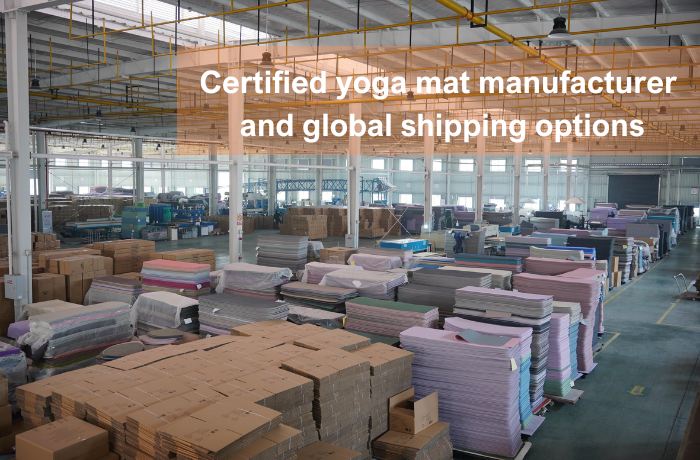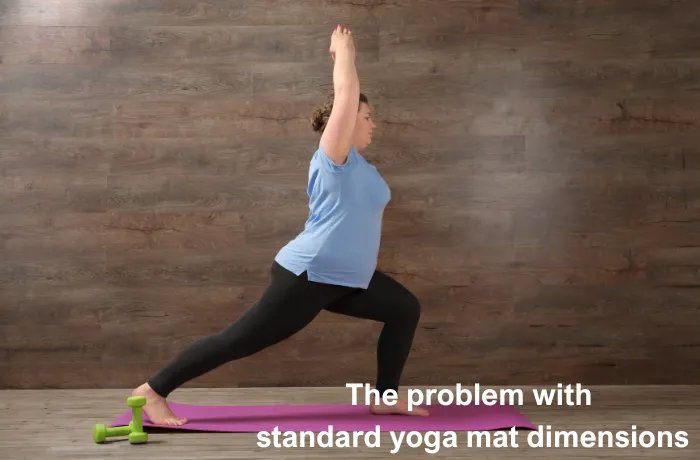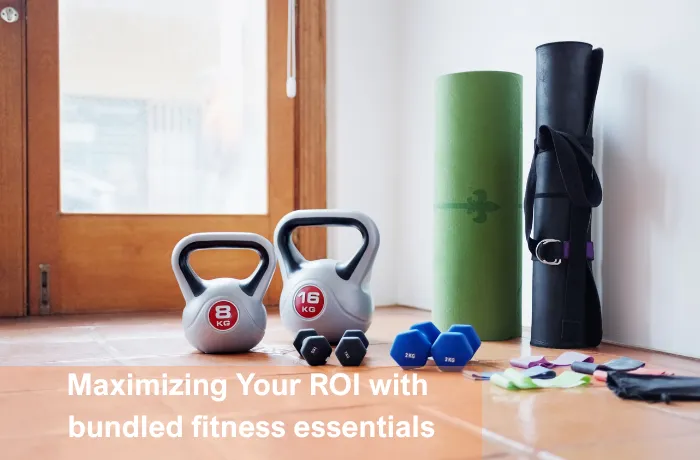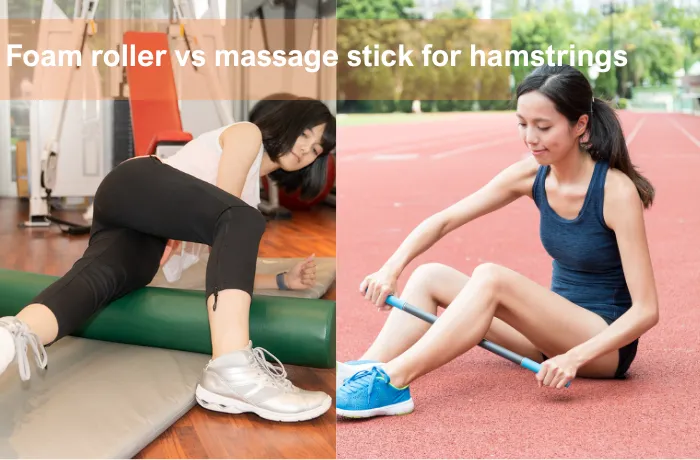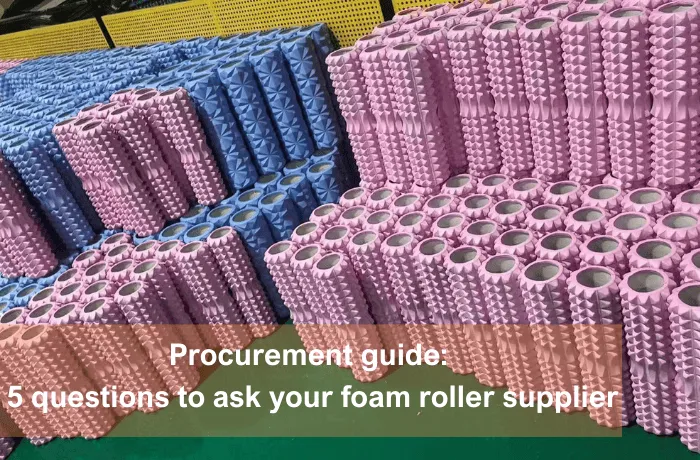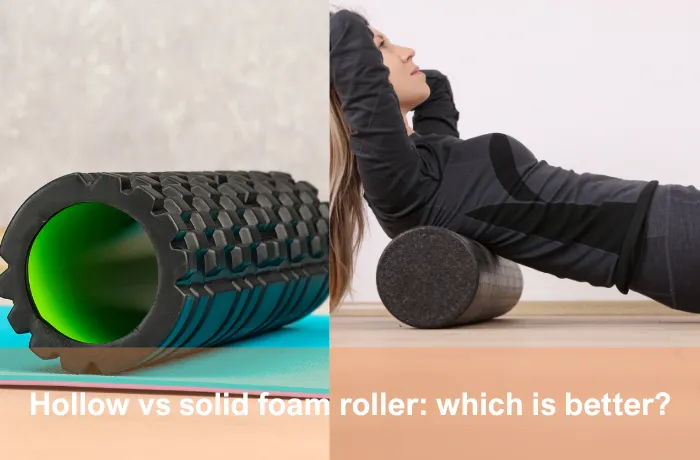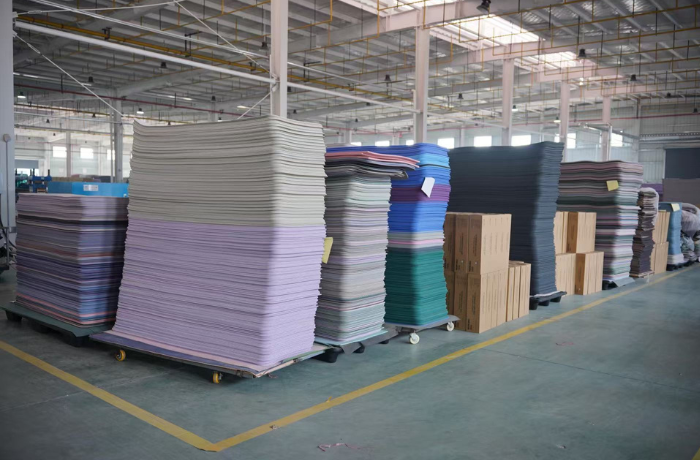
Finding a certified yoga mat manufacturer with reliable global shipping can appear challenging. It is important to be mindful of stringent regulations, fluctuating material costs, and counterfeit products. The table below outlines some common difficulties buyers encounter when sourcing from overseas yoga mat manufacturers:
| Challenge Category | Description |
|---|---|
| Regulations and Compliance | Stringent regulations and operational procedures make international purchasing complex. |
| Product Quality | Counterfeit and substandard mats can be unsafe and prone to damage. |
| Regional Differences | Tariffs and competition from local brands vary across regions. |
| Cost Fluctuations | Prices may shift rapidly, particularly for materials such as PVC derived from oil. |
Selecting a certified yoga mat manufacturer helps you sidestep these challenges, making the procurement process smoother and more secure.
Key Takeaways
- Pick certified yoga mat manufacturers with labels like FSC, OEKO-TEX, and BSCI. These labels help make sure products are safe, eco-friendly, and fair.
- Always check if a supplier is trusted. Ask for samples and check quality tests. This helps you avoid bad or fake mats.
- Choose the right mat material, size, thickness, and grip for your needs. You can also customise mats to fit your brand.
- Pick the best shipping method. Air is fast, but sea saves money. Freight forwarders can help with customs and paperwork.
- Keep all shipping papers safe. Track your order and tell someone right away if there is damage. This helps protect your purchase and get help.
Certification Standards
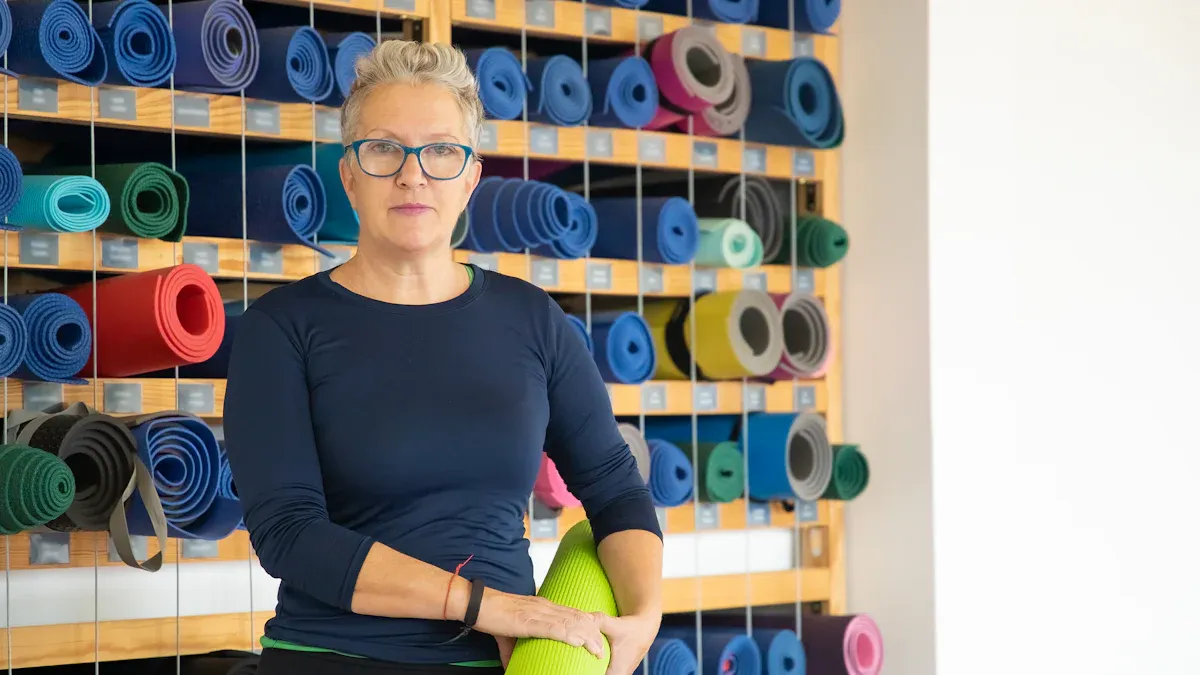
Key Certifications
When picking a yoga mat manufacturer, look for proof of international certifications. These show the products are safe and made in the right way. Some important certifications are:
- SGS: This checks the safety and quality of the product. It tests for things like heavy metals and other bad chemicals.
- BSCI (Business Social Compliance Initiative): This makes sure the company treats workers fairly and acts responsibly.
- REACH: This is a rule in Europe about chemicals in products. It makes sure yoga mats do not have dangerous chemicals.
- OEKO-TEX Standard 100: This label means the mat does not have harmful chemicals. It is safe to touch your skin.
- GOTS (Global Organic Textile Standard): This checks if the mat uses organic fibres and is made in a green way.
- Bluesign: This makes sure the mat is made safely and is good for the environment.
Tip: Try brands like Yogi Bare, Wellfitsource, and Mowin Yoga Mats. These brands have many of these certifications. You can trust their mats to be safe and good for the planet.
Big brands like Manduka, Liforme, and Jade Yoga also have certifications like OEKO-TEX and GOTS. These brands use safe materials and care about the environment. For example, Manduka PRO mats have the OEKO-TEX label. The eKO series uses natural rubber that breaks down over time. Liforme mats do not have PVC or other bad chemicals. Jade Yoga uses rubber from trees that can grow back.
Compliance Requirements
A yoga mat manufacturer must follow strict rules to get and keep these certifications. You should check if the manufacturer meets these rules:
- Chemical Safety: Mats must not have toxic chemicals. Manufacturers must pass tests for heavy metals and other bad substances.
- Eco-Friendly Materials: Using recyclable and biodegradable materials is important. Some mats have up to 40% recycled stuff.
- Sustainable Manufacturing: Factories should use less energy and make less waste. Using recycling and green energy is a good sign.
- Transparency: Manufacturers must show where they get their materials and how they make mats. They should have clear records and documents.
- Ethical Practices: Workers should be treated fairly. BSCI and Fair Trade certifications help prove this.
- Product Testing: For the EU and US, manufacturers must keep files and test results. These must be kept for at least 10 years.
- Traceability: Each mat should have a code or number. This helps track the mat and fix any problems.
- Authorised Representative: For Europe, the manufacturer must have someone to talk to the authorities.
| Certification | Focus Area | Example Brands |
|---|---|---|
| SGS | Product safety | Wellfitsource, Packaging Pro |
| BSCI | Social responsibility | Wellfitsource, Yoga Design Lab |
| REACH | Chemical safety | Wellfitsource, Packaging Pro |
| OEKO-TEX | Non-toxic textiles | Manduka, Liforme |
| GOTS | Organic textiles | Öko Living, Manduka |
You should always ask the yoga mat manufacturer for their certificates. Make sure the papers are current and match the mats you want. This helps you avoid trouble with customs, fines, or mats being sent back.
Verifying a Yoga Mat Manufacturer
Checking Credentials
It is important to check a yoga mat manufacturer before you buy. First, look at how long the company has been making mats. Companies that have been around longer are usually more reliable and make better products. You should also see if they have the right credentials. These show the manufacturer follows rules for safety, quality, and the environment. Some things to check are:
- Certifications like BSCI, ISO 9001, SCAN, and GRS. These show the company cares about workers, quality, and recycling.
- Test reports from trusted labs such as SGS. These reports check for things like safety, colour, and chemicals (like REACH and CA65).
- If big brands like Walmart or FILA work with them. This means the company is trusted by famous names.
- The factory itself. Make sure it is clean, has skilled workers, and uses safe methods.
- Can the company make enough mats for your order? They should offer the materials you want, like TPE, EVA, natural rubber, PVC, or NBR.
- Good service is important. The company should answer questions quickly and be helpful.
Tip: You can use websites like Alibaba.com, TradeWheel, Yanrefitness, and Accio.com to find good yoga mat manufacturers. These sites let you see supplier profiles, ratings, and reviews. You can also check if the company has passed outside audits or offers samples for testing.
Here is a table to help you compare suppliers on popular websites:
| Supplier Attributes | Details |
|---|---|
| Main Platforms | Alibaba.com, Accio.com, TradeWheel, Yanrefitness |
| Verification Methods | Third-party inspection, virtual factory audits, sample testing |
| Key Certifications | ISO 9001, SGS, OEKO-TEX, BSCI |
| Supplier Features | In-house QA/QC, raw-material traceability, OEM/ODM customisation, fast response times |
| Sample Policies | Free or paid samples, custom samples available |
| Industry Standards | Durability, slip resistance, eco-friendly compliance |
Quality Assurance
You want your yoga mats to be safe and high quality. Good manufacturers check their mats often during and after making them. Some let outside inspectors visit or let you see the factory. Here are some checks they do:
- Look at the mats for any problems, colour, or texture issues.
- Test the mats for thickness, strength, and how much they bend.
- Check for bad chemicals like phthalates, lead, or cadmium.
- Test if the mats grip well when dry or wet.
- Make sure the mats are thick enough to protect your joints.
- See if the mats are easy to clean and stop bacteria and smells.
You should ask for proof that the mats meet international standards. Look for REACH, OEKO-TEX Standard 100, and ISO 9001 certificates. These show the mats are safe and made well.
| Quality Assurance Process | Description |
|---|---|
| Visual Inspection | Checks for surface defects, colour, and texture consistency. |
| Physical and Mechanical Tests | Measures thickness, strength, and flexibility. |
| Chemical Safety Testing | Ensures mats are free from toxic chemicals and meet safety standards. |
| Slip Resistance Evaluation | Tests grip under different conditions to prevent slipping. |
| International Standards | Confirms compliance with REACH, OEKO-TEX, and ISO 9001. |
| Production Quality Checks | Includes regular inspections and third-party audits during and after production. |
Note: Always talk clearly with your yoga mat manufacturer. Ask about their quality checks and get samples before you buy a lot. This helps you avoid problems and makes sure you get the mats you want.
Product Requirements
Specifications
When you buy yoga mats, you must know what you want. First, pick the material. You can choose PVC, TPE, natural cork. Each one is different. Cork and bamboo are good for the planet and break down easily. PVC and TPE last long and do not slip much. Next, think about how thick the mat should be. Thin mats, like 2-4mm, are easy to carry and help with balance. Thick mats, like 5-7mm, feel soft and are good for gentle yoga.
The size of the mat is important too. Most mats are about 68 inches long and 24 inches wide. If you are tall or want more room, ask for a bigger mat. Grip is very important so you do not slip, especially if you sweat. The mat’s texture and stickiness help you stay safe. Think about where you will use the mat. Mats for home can be light and soft. Mats for gyms or studios should be thicker, heavier, and last longer because many people use them and wear shoes.
Tip: Always get a sample from your yoga mat manufacturer before you buy a lot. This lets you check if the mat feels good and does not slip.
Customisation
Customisation helps you make yoga mats that fit your brand or style. Top manufacturers give you many choices:
| Customisation Option | Details |
|---|---|
| Sizes | You can pick special sizes for different people or yoga types |
| Colours | Many colours are available, and you can match your own colour |
| Materials | You can choose natural rubber, cork, TPE, PVC, suede, and more |
| Thickness | Pick the thickness you want for comfort or easy carrying |
| Printing Methods | You can use screen printing, UV printing, laser engraving, or heat transfer |
| Logo and Patterns | Add your logo, art, or patterns to the mat |
| Packaging | Choose special packaging to show off your brand |
You can also ask for printing on both sides or extras like straps for carrying. Most companies want you to order at least 50 to 200 mats if you want custom designs. It usually takes 15-25 business days to make your order.
Yoga Studio Store and FDM Yoga let you put your own label and brand on mats. They help you design mats with your logo, special colours, and packaging. This is great if you want your own brand or special products.
If you do not have a logo or art, many companies can help you design your mat.
Global Shipping Options
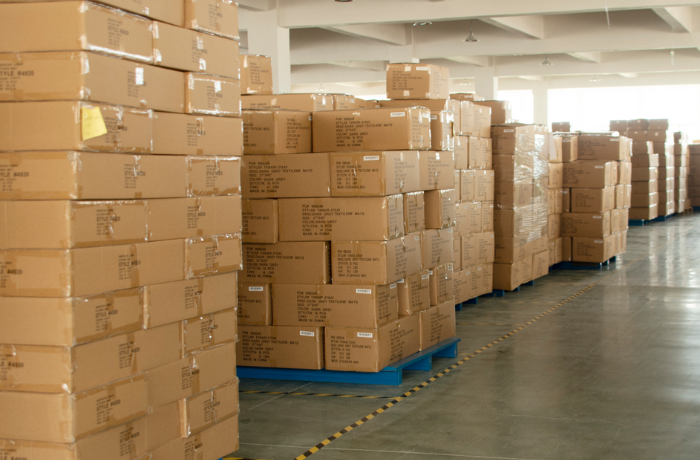
Shipping Methods
There are many ways to ship yoga mats around the world. Each way is good for different needs. The main ways are air, sea, road, and rail. Air transport is best if you need mats fast or if they are expensive. Sea transport is good for big orders and costs the least, but it is slow. Road and rail are used for local or nearby places, especially on the same continent.
| Shipping Method | Description | Cost | Speed | Suitability |
|---|---|---|---|---|
| Air Transport | Fastest, ideal for urgent or long-distance shipments | Highest | Fastest | High-value or urgent shipments |
| Sea Transport | Best for bulk international shipments | Low | Slowest | Large volume, international shipments |
| Road Transport | Flexible for local/regional deliveries | Moderate | Moderate | Local and regional deliveries |
| Rail Transport | Eco-friendly, good for long distances on land | Moderate to low | Moderate | Long-distance continental shipments |
A freight forwarding company can help with tricky shipping jobs. They handle customs and paperwork for you. This service costs more but makes things easier. For simple or short trips, a normal transport company is enough and costs less.
Brands like Liforme, Yogamatters, and Rootd send mats worldwide. Yogamatters works with GlobalE to ship orders to other countries. You can pick your favourite shipping way when you pay.
Tip: Express couriers like DHL and Evri International are very fast but cost more. Standard shipping is slower but saves you money.
Costs and Timelines
Shipping prices and times depend on how you send, how far, and how much you order. Air shipping is the fastest but costs the most. Sea shipping is cheaper for big orders but takes weeks. If the mats are in a US or EU warehouse, you get them in 2–7 days. If they come from China, it can take 15–45 days.
- Standard ground shipping in the US takes about 3–6 business days.
- If you order from the US to another country, it can take 4–6 weeks. You might pay extra taxes or import fees.
- Express shipping brings your mats in 1–2 days but costs more.
- Delivery can be slower during holidays or busy times.
Shipping costs go up if the mats are heavy, big, or need to go fast. Big yoga mats may cost more because of their size. You might pay extra for faraway places, weekend delivery, or customs.
Some brands give free or cheaper shipping if you buy a lot. For example, Yune Yoga gives free shipping if you spend over $80. Always check if your brand has deals or rules for free delivery.
If your parcel is damaged, sign for it as “DAMAGED” and take photos. This helps you get money back if you need to make a claim.
International Logistics
Documentation
When you send yoga mats to other countries, you need special papers. The most important paper is the Bill of Lading. This paper shows who is sending and getting the mats. It also lists where the mats start and finish their trip. The Bill of Lading tells what is inside the shipment. It is a contract between you and the shipping company. It proves who owns the mats and helps with customs and payments. Freight forwarders usually make this paper for you. They check that all the details are right.
You also need customs clearance papers. These help your mats cross borders without trouble. Freight forwarders can do these papers for you. They pay taxes or duties and make sure your mats follow the country’s rules. This saves you time and stops delays.
Incoterms are rules for shipping. They show who does each part of the job. They help you and the seller know who pays for what. They also show when the risk moves from the seller to you. Here is a table to show the main differences:
| Incoterm | Seller’s Responsibilities | Buyer’s Responsibilities | Risk Transfer Point | Notes |
|---|---|---|---|---|
| EXW | Packing only | All costs and risks | At seller’s factory | Buyer does most work |
| FOB | Export and loading | Shipping and import | When loaded on ship | Common for sea freight |
| CIF | Shipping and insurance | Import and local delivery | When ship leaves port | Seller pays for insurance |
| CIP | Shipping and insurance | Import and local delivery | When handed to carrier | Works for any transport |
| DDP | All costs and delivery | Receive goods | At buyer’s location | Seller does everything |
Tip: Always agree on Incoterms before you order. This stops confusion and extra costs.
Tracking and Delivery
You can follow your yoga mats after they leave the factory. Most shipping companies give you a tracking number. This number lets you see where your mats are. If you use a freight forwarder, they can tell you how your mats are doing.
Sometimes, things go wrong during delivery. Here are some common problems and how to fix them:
- Customs delays if papers are missing or wrong. Always check your papers.
- Wrong delivery address. Check your address before you order.
- Damage or loss during shipping. Use shipping insurance to protect your mats.
- Returns and refunds. Keep mats in their original packaging if you need to send them back.
If your mats come damaged or do not come at all, contact customer support fast. Take photos and keep all your papers. Good companies will help you fix the problem. They may give you a refund or a new mat.
You can make shipping easier by using carriers that help with customs and by keeping your papers safe. Always talk to your supplier and shipping company for updates.
You can make good choices if you follow some easy steps. First, look for certifications and materials that are good for the planet, like natural rubber or cork. Then, ask for samples and see what custom options fit your brand. Always check different shipping ways and how much they cost. Good suppliers give strong help, quick delivery, and clear tracking.
Remember: Careful planning and talking clearly help you avoid trouble and get good mats sent anywhere in the world.
FAQ
What certifications should you look for in a yoga mat manufacturer?
Look for certificates like SGS, REACH, and BSCI. These show the mats are safe and kind to the environment. They also mean workers are treated fairly. Always ask the manufacturer to show you these certificates.
How can you check if a yoga mat supplier is reliable?
Check reviews on sites like Alibaba or TradeWheel. Ask for samples and certificates from the supplier. Good suppliers answer your questions quickly. They give clear details about their mats and how they make them.
What is the best shipping method for large yoga mat orders?
Sea freight is best for big orders. It costs less than sending mats by air. It takes longer, but you save money when you ship many mats together. A freight forwarder can help with customs and paperwork.
Can you customise yoga mats with your own logo?
Yes, most certified manufacturers let you customise mats. You can add your logo, pick colours, and choose packaging. Some brands help you design your mat if you do not have artwork.
What should you do if your shipment arrives damaged?
Take photos of the damaged mats and packaging. Sign for the delivery as “DAMAGED”. Contact the supplier and shipping company straight away. Keep all your documents to help with your claim or refund.

